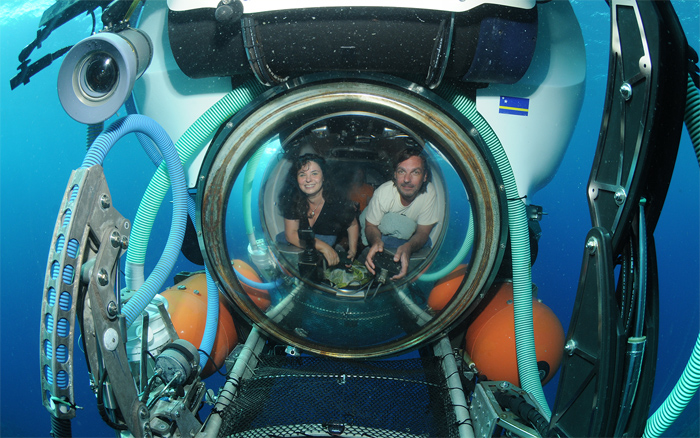
Who we are..
 Together with a team of divers and shell-enthusiasts worldwide, Jana and Felix organize trips to remote places of the world, in search of new malacological discoveries. Both are keen scuba-divers. They have become renowed for their enthusiasm and efficiency in contributing to the knowledge of molluscan diversity. |
Dr.
Felix Lorenz
studied Biology and worked as scientific consultant and custodian at the University of Giessen. He lectured on systematic zoology, parasitology, and electron microscopy, as well as conducting research in various fields of Biology. Frustrated with the structures of public institutions and the modern approaches to mainstream science, he decided to quit his job to become an independent biodiversity researcher and hunter for new species. He has published numerous scientific papers and books on cowries (Cypraeidae), ovulidae and other molluscan families, focusing on their systematic taxonomy, ecology and zoogeography. He has discovered and named more than 200 molluscan taxa. He also works as scientific consultant of the Molluscan Science Foundation, Inc. in Maryland, USA, and is an accredited appraiser for shell collections. Jana Kratzsch also studied Biology at the University of Giessen and became interested in diving and underwater photography in her early youth. She has become an experienced field worker involved in the search and documentation of gastropods, and the tiny and hard-to-detect groups, in particular. Jana has contributed a large number of photos to "The Living Ovulidae" (Lorenz & Fehse 2009), and has become well-known for her in-situ photographs of seashells published in various books, e.g. those of Helmut Debelius. |
| Our mission
What is the purpose of finding new species? First of all, it increases our knowledge of what lives out there. In assembling collections of seashells from different places, we provide an overview to the molluscan fauna that also characterizes a place in general: the combination of molluscan species of a particular location give indications on water temperature, bottom structure, other organisms that live in the same habitat, and also, if the environment is healthy or not. The comparison of shell collections made over decades in the same place, as well as sampling dead shells from older sediment, can give information on the history of an area. Changes in the composition of the fauna, e.g. as an effect of pollution, dynamite fishing, or climate change, instantly manifest in a change in the molluscan fauna. The more we know about the shells of a particular habitat, the more such information can be obtained. Seashells can serve as source of information that could otherwise be gathered only by expensive and hard to conduct long-term analysis. They are the only marine organisms whose shells last for centuries and can be found in every marine habitat. You can only protect a creature that is known to exist... Every species of plant or animal is given a latin name to assist communication among scientists. This name consists of a genus- and a species designation. A third name is given for subspecies, which are units within a species characterized by subtle differences within a defined geographical range. The name of a species is provided by a description which has to follow a certain procedure set by the International Code of Zoological Nomenclature (ICZN). The complete citation of a scientific name also adds the name of the author and the date of publication. The discovery of a new species of shell requires the knowledge of what is already known and described. For many groups of molluscs, there are experts that are familiar with all described species in their respective field of expertise. When hunting for new species, it is necessary to involve these experts as no one can possibly have enough of an overview of all the tens of thousands of species of molluscs. When a new species is discovered, the process of describing it can last between a few months and many years until the description gets written and published. After the day of the publication, the new species will be called by the latin name proposed by the author(s). When we travel in search of new species, we make collections of nearly every group of shells, concentrating on those that look unfamiliar. These will be passed on to the respective experts worldwide. In the past fifteen years, we have discovered a large amount of fascinating new species from all over the world, including the world's largest species of the family of oysters, and a new species of Giant Clam, which are shown in the Gallery of Discoveries. | |